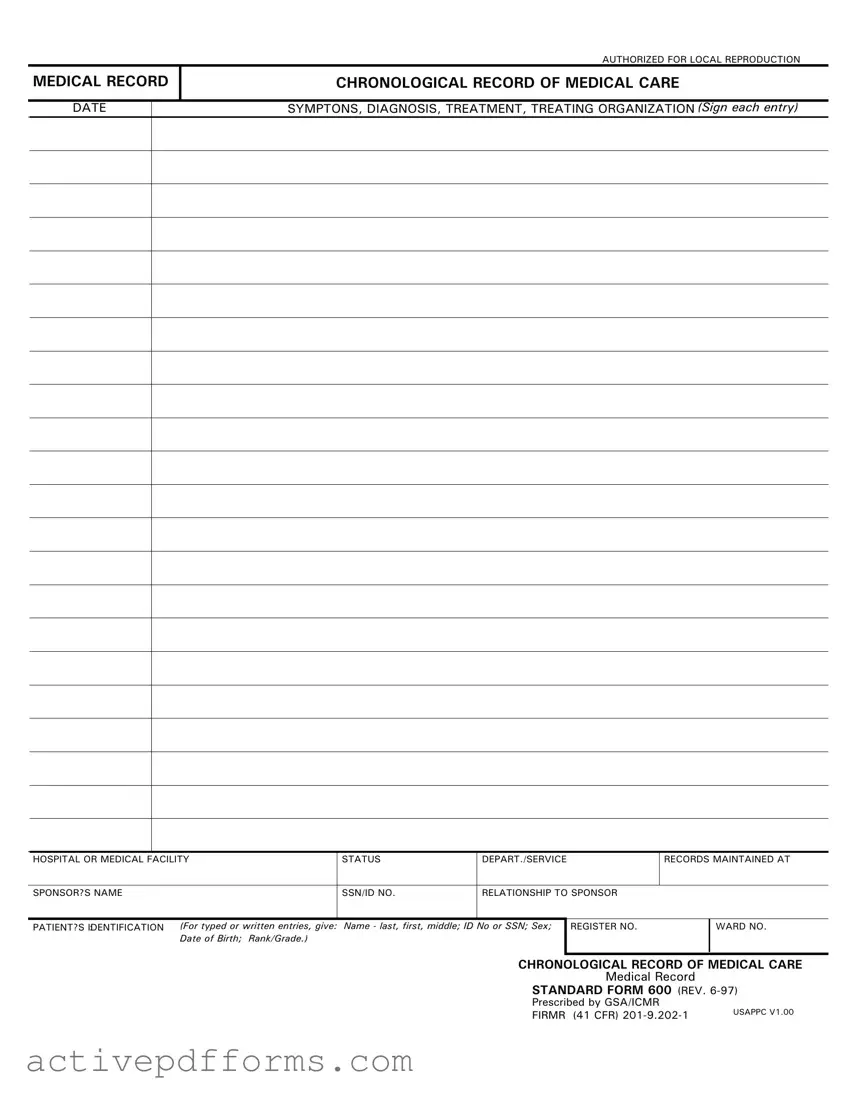In managing healthcare, documentation plays a crucial role, ensuring that every aspect of patient care is meticulously recorded for future reference, legal compliance, and continuity of care. Among the plethora of forms healthcare professionals encounter, the Standard Form 600, or SF 600, stands out as a vital component of medical record-keeping, particularly within the realm of government services. It serves as a chronological record of medical care, providing a concise yet comprehensive overview of a patient's interactions with healthcare services. This form captures critical information, including dates of care, symptoms presented, diagnoses made, treatments administered, and details of the treating organization. Every entry on the form requires a signature, underscoring the importance of accountability and accuracy in documenting medical care. Additionally, the SF 600 includes sections for patient identification, such as name, ID or Social Security Number (SSN), sex, date of birth, and rank or grade for service members, thereby ensuring that the record is clearly linked to the correct individual. Hospitals or medical facilities, along with departments or services where records are maintained, are also noted, providing a clear framework for where these essential documents are stored. Authorized for local reproduction, this form is standardized to ensure uniformity across different institutions, simplifying the process of record-keeping and making it easier to review a patient's medical history over time.

